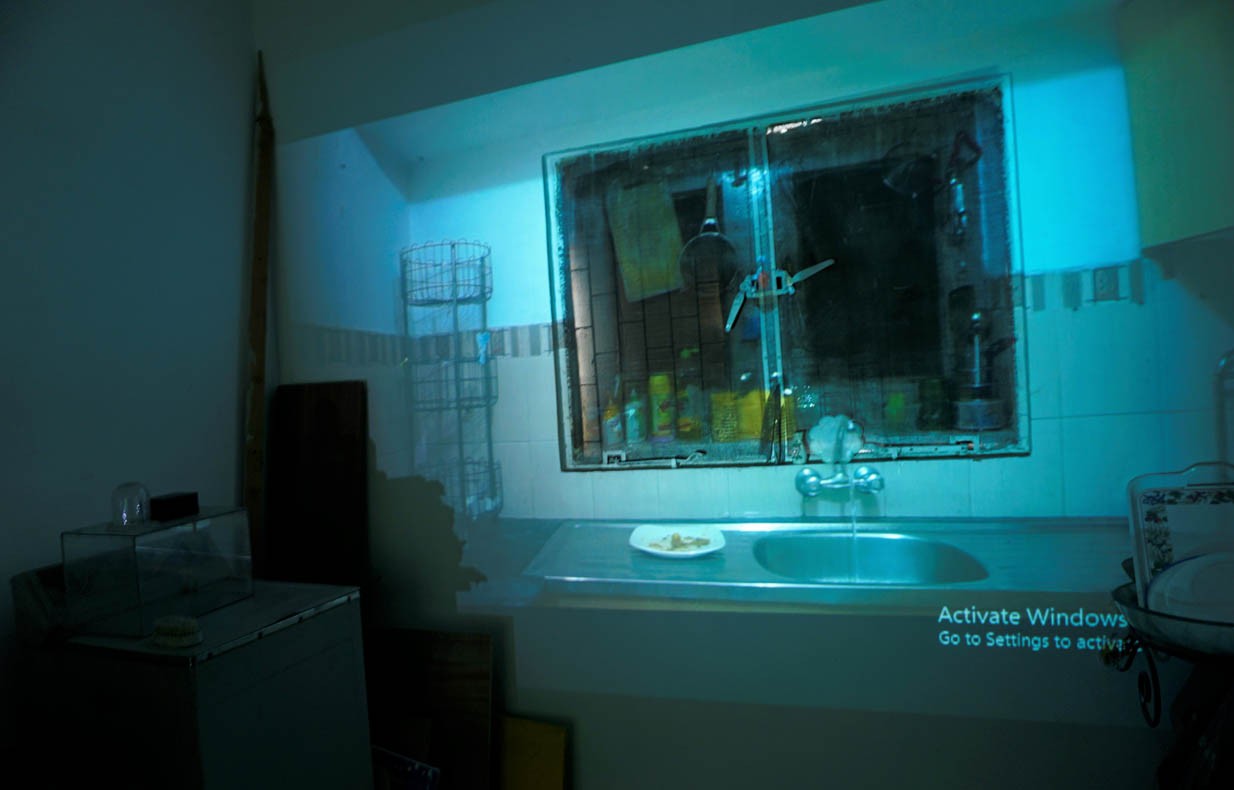
The second edition of Mansion Artistes Residency offered an opportunity to see the usual through a new set of eyes

Look is a worthy word in art. When uttered in Punjabi (luk), it refers to bitumen, a material for road surfacing. The word ‘look’ appeared in both its contexts in the art of Hifza Farooque. She created an object, a flat surface on the wall, with two kitchen sinks so that the viewer could see their back sides with drainage pipes removed. At a first glance, the works appeared as a woman’s chest; holes in the centre of both sinks accentuate that reading.
Farooque, in an oblique way, alludes to the persistent male gaze on a woman’s body. But then she coated the entire piece in bitumen (luk in Punjabi). The black substance added a shine, almost an invitation to touch, while the fact that it was sticky created a sense of revulsion.
Another work, complementary to the first, could be considered either a male organ or a female torso with umbilical cord. This too was the base of a kitchen sink, coated with bitumen, with a loose drain pipe hanging in the air. Like an androgynous character, the second object could be classified a male or female entity. In reality, it was just a piece of kitchenware, transformed and tarnished, or perhaps elevated. Following Marcel Duchamp’s Fountain, 1917 (a porcelain urinal, placed upside down and with an ‘artist’s’ signatures) her work made viewers reconsider functional objects in their surrounding as fictional and to explore new meanings and possibilities in familiar sites.
The second edition of Mansion Artists Residency was an attempt to provide an opportunity for both artists and viewers to see the usual through a new set of eyes. Like Farooque, other artists also manipulated the space between art and life, between reality and imagination, between the ideal and physical. Held from March 2-April 4, 2018 at 48 L, Gulberg, Lahore, the second edition of the Residency invited a total of six artists, all recent graduates from NCA and BNU to produce work at the location.
The location, a house in Gulberg that belongs to Nausheen Saeed, the founder and director of the Residency, has a peculiar history. Due to its perpetual transformations, it became a source of curiosity, amazement and amusement among Saeed’s friend. Saeed’s mother used to surprize her children with the quick alterations she kept making in the house. It was a house that was never at rest; thus it offers a perfect option for the artists to intervene.
Now the daughter is trying to continue the tradition -- by inviting artists to complete the job. Talal Faisal placed a phonogram (gramophone) on the wall, with a round mirror fixed in the middle of the disc, so that when the disc moved, the viewer found himself being part of the object and its environment. Like the famous quote of Andy Warhol -- "In the future, everyone will be world-famous for 15 minutes" -- everyone who viewed Faisal’s work became a resident of the building.
Umer Nawaz has added a false ceiling to the existing roof. The new part was noticeably low, so a subtle architectural addition became a point of concern, sort of a problem for eyes (people still walk under it with their head almost touching the ceiling). Because a person is not accustomed to that proportion in buildings, thus the work which does not appear as ‘art’ in an orthodox sense, had its unavoidable presence, power and impact. Nawaz’s work can be a metaphor of power too and the suppression of humans in the face of man-made structures -- a kind of Kafkaesque condition. Tilted reality, also referred to in the installation of Hamza Rana, was composed with poles, concrete pipe, soil, and vegetation growing in plastic sacks etc.
Most artists selected in the Residency responded to the layout, material and detail of the house. For instance, Safdar Ali has fixed 14 ceiling fans in a living room (a nightmare in the age of load shedding and UPSs!). He made a network of these products, all moving in different speeds. The experience of finding multiple fans under one roof, with varying pace (and occasional sound of colliding), puts a person in great doubt about reality. But what is reality? It is not fixed or historic; every attempt of a person to construct something concrete or virtual is part of reality.
Noreen Jahan disturbed the balance between different realities. In her work, one deals with the difficulty to discern between the physically built part of the house and the projected image. The work offered a view of a metal mesh window, sink, water trickling from the tap, a dirty plate on the side, jars of washing liquid and detergent placed on the ledge, different utensils hung or stored around. The inclusion of wall details reinforced the sensation of a physical site seen in diffused light. Actually, only the wire mesh window was the actual part of the building; the rest was artist’s imagination and fabrication.
The Mansion Artists Residency tried to bring life and art in constant contact (outside of orthodox arty settings) to the extent that one found it difficult to distinguish one from the other.